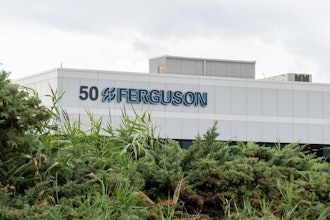WASHINGTON (AP) — The number of Americans seeking unemployment benefits rose last week. But the rise comes after applications hit their lowest level in nearly three years, and economists expect further declines as the economy improves.
Applications increased by 26,000 to a seasonally adjusted 397,000 during the week ended March 5, the Labor Department said Thursday.
The latest report covers the week after the Presidents' Day holiday (Feb. 21), when many government offices were closed. Applications usually rise in weeks following holiday-shortened weeks.
The four-week average, a less volatile measure, rose to 392,250. The average fell to its lowest level since July 2008 two weeks ago.
Applications below 425,000 signal modest job growth. But they need to fall consistently below 375,000 to signal a sustained decline in the unemployment rate. Unemployment benefit applications peaked during the recession at 651,000.
Economists were encouraged that claims remained below 400,000 for the third straight week.
"We still interpret the data as consistent with strengthening job creation," said John Ryding, an economist at RDQ Economics.
A separate report Thursday showed that a sharp rise in oil prices helped push imports up at the fastest pace in 18 years in January. That caused the U.S. trade deficit to widen to its largest level in six months.
The January trade deficit increased 15.1 percent to $46.3 billion, the Commerce Department said. Exports rose 2.7 percent to an all-time high of $167.7 billion. But imports rose a faster 5.2 percent to $214.1 billion due to a big jump in America's foreign oil bill. That underscores concerns that surging oil prices could derail the economic recovery.
Companies are hiring more, after months of sluggish job creation. Employers added 192,000 jobs last month, the most in nearly a year. The unemployment rate ticked down to 8.9 percent, the lowest level since April 2009.
More jobs should boost incomes, which would fuel more consumer spending and in turn spur more economic growth and hiring. Federal Reserve Chairman Ben Bernanke referred to this cycle last week when he said there is "increased evidence that a self-sustaining recovery in consumer and business spending may be taking hold."
At the same time, Bernanke said, "until we see a sustained period of stronger job creation, we cannot consider the recovery to be truly established."
Economists worry that several factors could slow or even reverse the recovery, including rising oil prices and state and local government cutbacks.
Plenty of hiring is taking place. Kohl's Department Stores Inc. said Wednesday that it is opening nine stores in seven states, including Illinois, New York, Virginia and South Dakota. The move will create 1,200 jobs, the retailer said.
Thursday's report also showed the number of people receiving unemployment benefits dropped by 20,000 to 3.77 million. That's the lowest level since mid-October 2008. And fewer people are receiving benefits under emergency unemployment aid programs funded by the federal government.
An additional 4.3 million unemployed workers received benefits under the extended programs during the week ending Feb. 19, a drop of about 200,000 from the previous week. Some of those recipients may have found jobs, while many likely exhausted their benefits. Altogether, 8.8 million people were on the benefit rolls that week.
__
AP Economics Writer Martin Crutsinger contributed to this report.


















